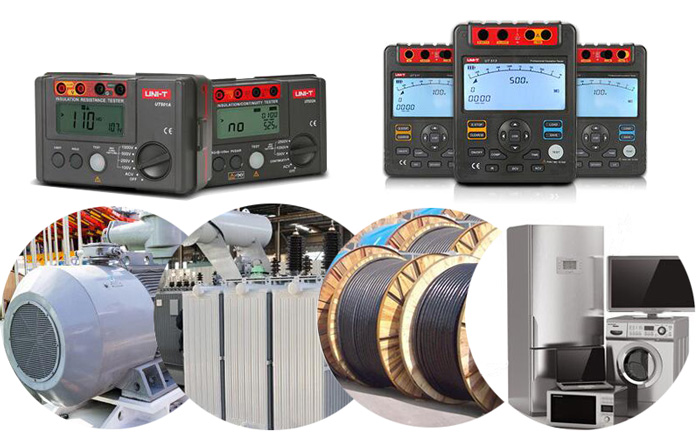How to Select an Insulation Resistance Tester?
The insulation performance of electrical equipment is usually judged by measuring its insulation resistance. In order to ensure the personal safety and the operation safety of electrical equipment, a minimum requirement is imposed on the insulation resistance between conductors of different phases or between the conductor and the equipment casing. In power engineering, the insulation resistance is measured quantitatively an insulation tester, also called megohmmeter or megger, so as to determine whether there are insulation problems or hidden safety hazards.
What are the requirements on the insulation resistance?
The requirements for insulation resistance in the indoor low-voltage electrical circuits are: the resistance between the phase line to earth or neutral should not be less than 0.22MΩ, and the resistance between the phase line and the phase line should not be less than 0.38 MΩ.
The regulations for household appliances: basic insulation resistance is 2MΩ, and reinforced insulation resistance is 7 MΩ. For low-voltage motors, the insulation resistance should be no less than 0.5 MΩ. For high voltage motors, the working voltage per kilovolt is not less than 1 MΩ.
In summary, the larger the insulation resistance, the better.

How to choose a right insulation tester / megohmmeter?
A megohmmeter or megger is a portable instrument especially used to measure the insulation resistance of electrical equipment. The general megger is mainly composed of a hand-cranked DC generator, a magnetoelectric ratio meter and a measuring circuit.
The voltage level of the insulation tester should be selected according to the voltage level of the electrical equipment. If the voltage of the insulation resistance meter is too high, the insulation of the equipment under test may be damaged. If the voltage is too low, the measured data cannot truly reflect its insulation.
1. Voltage selection
High-voltage electrical equipment requires larger insulation resistance values, so a high-voltage megohmmeter must be used for testing. However, as to the low-voltage power equipment, the voltage it can withstand internally is not high. For the safety of the equipment, an insulation resistance tester cannot be chosen with a too high voltage when measuring insulation resistance. When selecting an insulation resistance meter, the rated voltage of the insulation resistance meter must in principle be compatible with the rated voltage of the measured object.
When the insulation resistance is measured according to the Electrical Equipment Test Standard, the voltage grade of the insulation resistance meter is as the following table:
| Working Voltage of the Measured Equipment (V) | Test Voltage of Megger (V) |
| 100V below | 250V |
| 100 ~ 500V | 500V |
| 500 ~ 3000V | 1000V |
| 3000 ~ 10000V | 2500V |
| 10000V above | 5000V |
2. Selection of resistance scope
As the working voltage of various electrical equipment, power lines and devices requires large values of their withstand voltage, the measurement range of their insulation resistance values is very different. Selecting a proper range of resistance value can better ensure the measurement accuracy and analyze its insulation.
3. On-site measurement
After long-term operation, a large amount of oil and dust will accumulate on the surface of high-voltage equipment, affecting its insulation strength. Under severe operating environment, the temperature of the coil insulation material will cause the aging of the insulation material to crack and the coil will be damp. In order to ensure long-term safe operation of power, it is necessary to regularly measure the insulation resistance.

